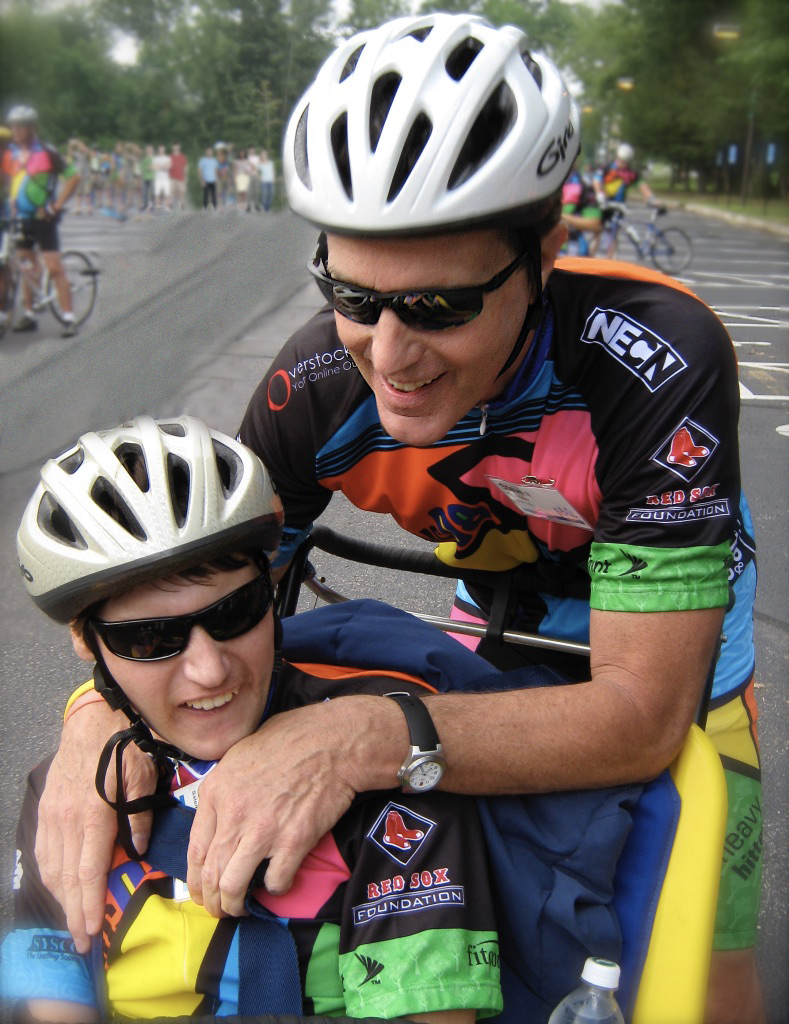Most of us have experienced the eerie feeling that goes with handling the personal possessions of a loved one who has passed away.
Some very mundane things can produce surprisingly poignant reactions. Such was the case when our son passed away at age 22 from complications of cerebral palsy and epilepsy. Graham’s mom and I knew we might be carrying sentimentalism to the extreme, but many of the things that our son left behind became nothing short of sacred to us.
Sorting through Graham’s drawers one day I teared up at the sight of his hairbrush!
The little wooden stick with its crooked yellow bristles was suddenly sacred because it had groomed his satiny hair. A crinkled tube of Tom’s Silly Strawberry toothpaste and his Royal Mandarin cologne were suddenly precious artifacts; the scents from those toiletries evoked Graham in the deepest parts of my brain.
Clothes, we discovered, were uniquely sacred because they’d physically enveloped the person we adored.
Graham’s soft winter scarf, his down ski jacket, the tassel loafers he sported on special occasions, the Teva sandals he wore on trips to the Caribbean were all sacred now. His Life is Good tee-shirts were particularly so because they’d fit his torso — and his message of hope — so perfectly. And then there were the sneakers. I’d collected them throughout his life, to mark the passage of time, the way some families create pencil marks on the door frames of bedroom closets. There was particular pathos in the sneakers because Graham stood proudly in them when assisted by a parent or friend, but the soles never had the chance to become worn down by walking or running.
It was unfathomable that Graham’s familiar belongings were sitting dispassionately in drawers and closets, waiting for the right moment to be given away, when the beautiful person who wore them was gone.
But, the summer after Graham’s passing, it thrilled me to see our matching yellow life jackets back in use, worn by the campers and counselors of a place called Camp Jabberwocky. In that magical sleepover summer camp for children and adults with disabilities on the storybook island of Martha’s Vineyard, my heart was full as a watched resilient people paddling and laughing in the Vineyard Haven harbor.
At home, Graham’s wheelchair occupied its old spot in the dining room for many months, heartbreakingly empty.
The chair became a nearly holy object — the ultimate symbol of a life lived with incomprehensible dignity. It took a long time before I was ready to let it go and donate it to Crotched Mountain, the school and children’s hospital that Graham had attended in southern New Hampshire.
Time has passed, but even now we part with our son’s remaining possessions unhurriedly.
It felt wonderful, very recently, to donate Graham’s cushiony sheepskin mattress pad to a friend with cancer who had become bedridden. But I plan to keep the turquoise necklace that I gave him many years ago as a symbol of healing — at least for now.
I flew to Bermuda after Graham’s passing to write some stories for a memoir about him.
I chose to stay in the same hotel where he and I had spent a singularly joyful week together. For the first time, I was struck by the elegant features of a vintage Otis elevator car that we’d ridden daily during our time there — an ornate chandelier, polished brass handrails, and inlaid marble on the floor. One morning I asked the elevator out loud if it knew how lucky it was to have once held the most special of all people within its mahogany walls.
If you were to ask me, that classic Otis elevator car is a sacred thing now.
As a physician, I’ve learned to be humble when counseling people about grief. There’s no right or wrong way to grieve and there’s no correct timetable for it, either. Each one of us has the right to deal with loss in his or her own way. Sometimes there’s an obvious trigger for a spike in sadness, like a birthday, but it tends to pop up unpredictably, too. If grieving goes on for a long time or is debilitating, I encourage people to ask for the thoughts of a mental health provider. Thankfully, there’s much less of a stigma about this than just a few years ago.
From my own experience, I can recommend a few simple ways that we can help ourselves when grief becomes persistent or severe. I made up a mnemonic device to make them easy to remember: GRACES.

- Giving: Engaging in an act of compassion or charity will always make us feel better.
- Reconnecting: Getting together with friends and family is frequently therapeutic. Laughing really helps.
- Appearances: This might sound frivolous, but doing something that makes us look better in the mirror can be beneficial. This can be as simple as getting a great haircut or a new outfit.
- Creativity: Just about any expression of creativity, from scrapbooking to drawing to cooking, can ease grief. For me, taking and editing photos takes my mind off everything else.
- Exercise: We all know about the benefits of exercise. Getting outside and doing just about anything that raises the heart rate three times a week qualifies. It’s even better when we can do it with other people, like playing racquet sports.
- Spirituality: This one is different for every person, but whatever makes us feel connected to something bigger is fine. A walk in the woods works well for many people, and so does spending time in houses of worship.
I tried these simple strategies for months and my heart still broke at the sight of Graham’s empty chair. In time, however, I was able to feel a sense of joy when I thought about a stranger riding in it and being loved in it as much as we loved our beautiful boy.
**Originally published at the Happiness Series


